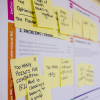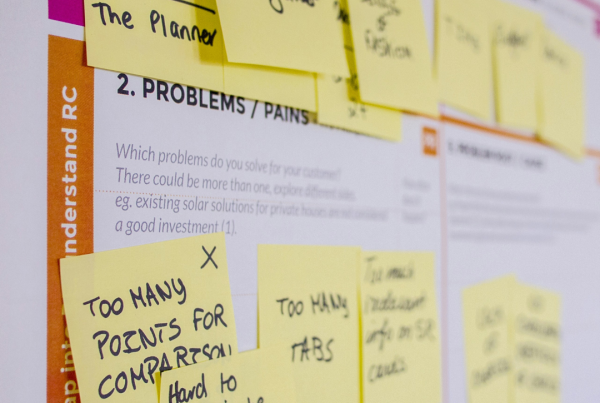9 Tips to Prioritise What Matters Most In Your Product
Product leaders and managers often face a common challenge when developing a set of features for a digital product. On one hand, you have to focus on what the user needs, while on the other, the business has constraints or—and it does happen—different priorities than users’ demands.
You’ll usually be dealing with constraints, such as
- Limited time and resources: There will always be something that’s lacking, whether it’s time, budget, or manpower. Focusing on the most critical features helps you maximise the resources you have.
- User needs: Not every feature is equally useful or important to your users. You’ll need to understand which ones are the most valuable to your users.
- Business impact: Certain features will have a bigger impact on the business in terms of sales or competitive advantage than others.
With such limitations, you can’t afford to take a leisurely pace nor cut corners with the product. It’s why I recommend my clients not to skip the product discovery phase, as it sets the agenda for the current product iteration. There are many popular prioritisation frameworks you can use, including
- Impact-Effort matrix: Prioritises projects or tasks based on the impact and effort needed.
- KANO model: Measures customer satisfaction with a product’s features to help prioritise.
- RICE method: Considers the reach (R), impact (I), confidence in the feature (C), and effort (E) required.
- Story Mapping method: Useful for building minimum viable products (MVP), it involves mapping the whole user journey to prioritise features accordingly.
- MoSCoW method: Helpful to determine what goes in product releases. It looks at features that are considered must-haves, should-haves, could-haves, and won’t-haves.
- Buy A Feature method: A type of gamification where you get users or participants to hypothetically spend money on features that they want the most to uncover new user insights.
Regardless of which method or combination of methods you employ, you will still face setbacks at times trying to balance the needs of users, management, teams, and partners. To help you out, here are a few of the tips and tricks I have learned to make prioritising work just a bit easier for you.
Tip #1: Focus on prioritising outcomes instead of features
Don’t miss the forest for the trees. As product leaders, you need to keep your eyes on the long-term goals while focusing on product releases and cycles. By concentrating on outcomes instead of features, you’ll be able to do both.
You can do this by grouping features into a strategic outcome, such as “increase premium subscription” or “increase user satisfaction”. You can dissect it further into different user personas, as they will have different needs and motivations. Just remember that the value of an outcome must be backed by customer data and research.
Tip #2: Consider the Pareto principle and find the 20%
The Pareto principle, or the 80/20 rule, stipulates that 80% of results are derived from only 20% of factors or causes. This 20% is the “vital few” that you need to spend energy identifying and prioritising. For example, you may find that nearly 80% of users had subscribed because they love 2-3 feature sets of your product.
By shifting your mindset to focus more on perfecting the 20%, you can improve the product’s success. The next time you have too many initiatives or projects to schedule, look at what the teams are working on and see if they really are worth it. Don’t be afraid to pause, stop, or de-prioritise something if circumstances have changed or mistakes were made.
Tip #3: Determine what success looks like
Setting priorities requires goals also, and you can consider parameters such as time to market, cost-efficiency, user acquisition, and staff productivity. These goals can help guide your product roadmap prioritisation, on top of fulfilling product goals.
It’s a good idea to share what success looks like with other stakeholders, such as the senior management, design, and development teams, for feedback. You’ll then be able to identify gaps and bottlenecks in your product process to help you set priorities better.
Tip #4: Budget for curveballs
Things won’t always go to plan, and your assumptions can be wrong. Putting in allowances and plans for unexpected constraints is not only smart but also prevents major product disasters. From system failures to unexpected delays due to circumstances such as sickness or general misunderstanding, consider strategies on how to deal with them.
By implementing an established system to cater for unpredictable events, you can quickly remedy the situation and maintain stakeholders’ trust. For example, you can allocate a certain number of resources to work on urgent tasks with hard deadlines whenever they are needed, while still allowing other initiatives to run with reduced resources.
Tip #5: Approach prioritisation as a team activity
You may be tasked with prioritising features and projects, but you can only do a good job when you get input from multiple stakeholders. An easy solution is to do it as a team, not only to gain different perspectives but also to build team cohesion. Plus, it’s a lot more fun this way.
For my clients, I typically run product discovery sessions as a group, with cross-functional team leaders and relevant stakeholders involved. Using a proven, structured process to gather insights and ideate more creatively together, my clients are usually amazed at how much can be discussed and prioritised in a short time together.
Tip #6: Learn to deal with upper management effectively
Whether you like it or not, you will, depending on your company culture, encounter interference from upper management. This is more common in companies that are hierarchical in nature. It can be stressful trying to answer to senior execs while also keeping projects running smoothly at the same time.
As a product leader, you can bridge the gap between teams and senior management through regular and clear communication. Try sharing regular insights with management and involve them in the product process early on, as it can help upper management to understand the rationale behind your decisions and the constraints you’re working with. Showing them a proven prototype will also help convince them of your case further.
Tip #7: Don’t spend too much time prioritising
The truth is, you’ll never get it right the first time, every time. Sometimes, you’re working with a set of estimations that are backed with limited data or research. Therefore, you shouldn’t be spending a long time trying to determine which features or projects should take precedence. If you’re spending more time prioritising and re-prioritising than on actual execution work, then take a step back.
You can try setting a time limit on prioritisation work. Most of the time, you’ll learn more as the project goes along and adjust accordingly. At the end of the day, minor mistakes will not matter in the long run as long as you know how to fix them immediately.
Tip #8: Always assess whether your prioritisation method is serving its purpose
The method you use to prioritise may not be serving its purpose after some time, especially following a business direction change or changing market conditions. As with any process, you should evaluate how effective your methods are and whether they are helping you achieve product goals.
It’s helpful to have an open communication channel with team leaders for them to provide feedback on whether your roadmap, resource allocation, and schedule are effective. Keep in mind that new processes and initiatives do take time to show results. The bottom line is, there’s always room for improvement if you look hard enough.
Tip #9: There will be times when you have to trust your gut instinct
In an ideal scenario, you have access to all the critical data and analysis needed to make the best decisions. In reality, it’s not quite the same. Sometimes, there are no straight answers, and you need to apply a bit of experience and gut instinct to finalise your decisions for teams to move faster and products to be released quicker.
This trait is particularly helpful when working in startups. Rather than spending more time conducting user tests and researching, you can make decisions based on a mixture of data and gut feeling. It’s easier to do so if you have a mentor by your side or include other team leaders in the decision-making process. Sometimes, the only way to know for sure is to release the new product or product iteration in the market and be ready to pivot when necessary.







